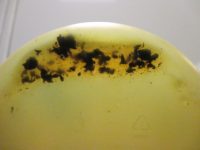Sludge is to machinery what LDL cholesterol is to the human body (not good). Sludge is basically the formation of heavy, thick, greasy, tarry deposits that tend to collect in certain areas. It can be dark or clear, hard or gummy, minimal or pervasive. Some of the causes are:
- Additive and/or base oil incompatibilities
- Electrical sparking
- Overheating
- Lengthy cold storage
- Antifreeze, water, grease and/or soap contamination
- Oxidation, aeration and/or nitration
The best way to remediate the problem is to determine the root cause, which can require some detective work (TestOil’s experts have seen it all before and can help).
The following are a few examples of sludge samples analyzed by TestOil: Sludge samples were found in the main bearing housings of a steam turbine. Analysis of the sludge found contamination with an incompatible polyol ester fluid, as well as lubricant degradation products.
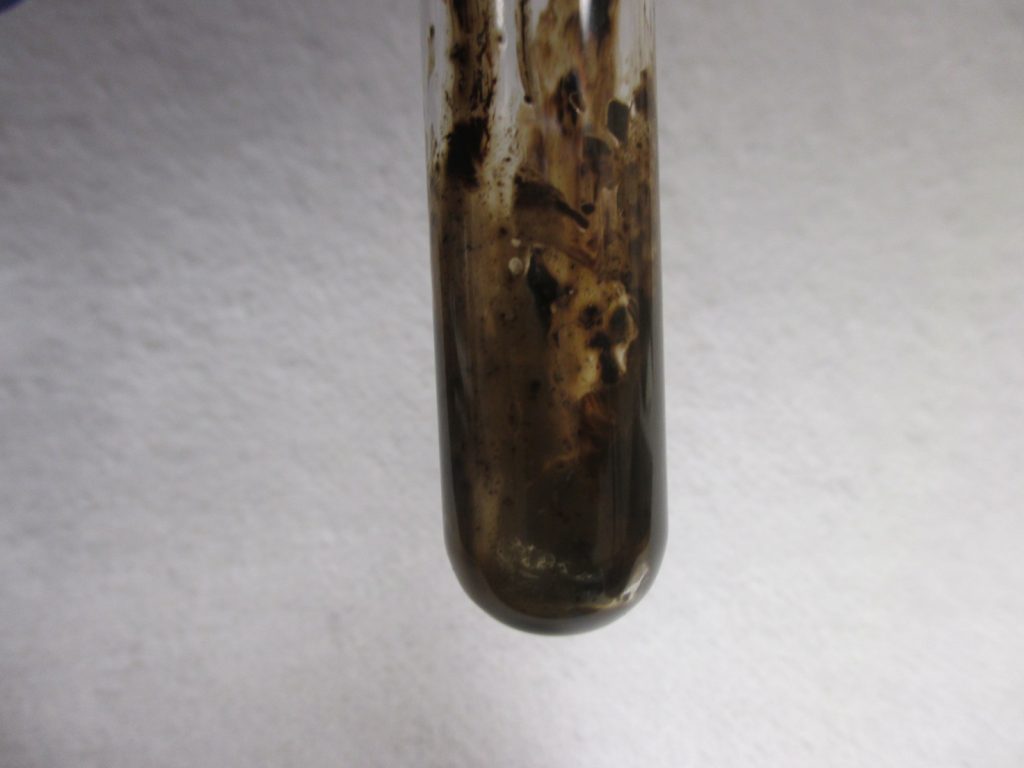
Sludge material was found in the reservoir of a mist system. Analysis of the material found it to be precipitated additives. This is most likely due to the mixture of incompatible fluids.
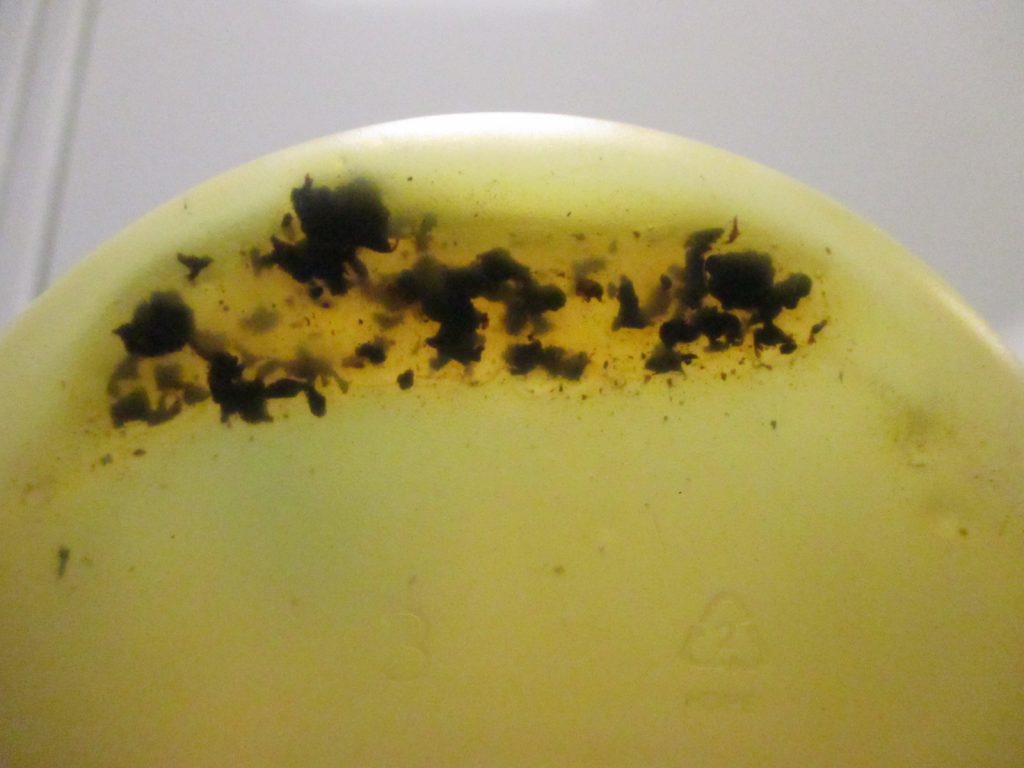
Sludge material clogging the suction strainer of a rotary screw ammonia compressor. Analysis of the sludge found lubricant degradation products, rust, and ammonium acetate. Lubricant degradation byproducts are often tacky and other contaminants will stick to these deposits causing them to grow.
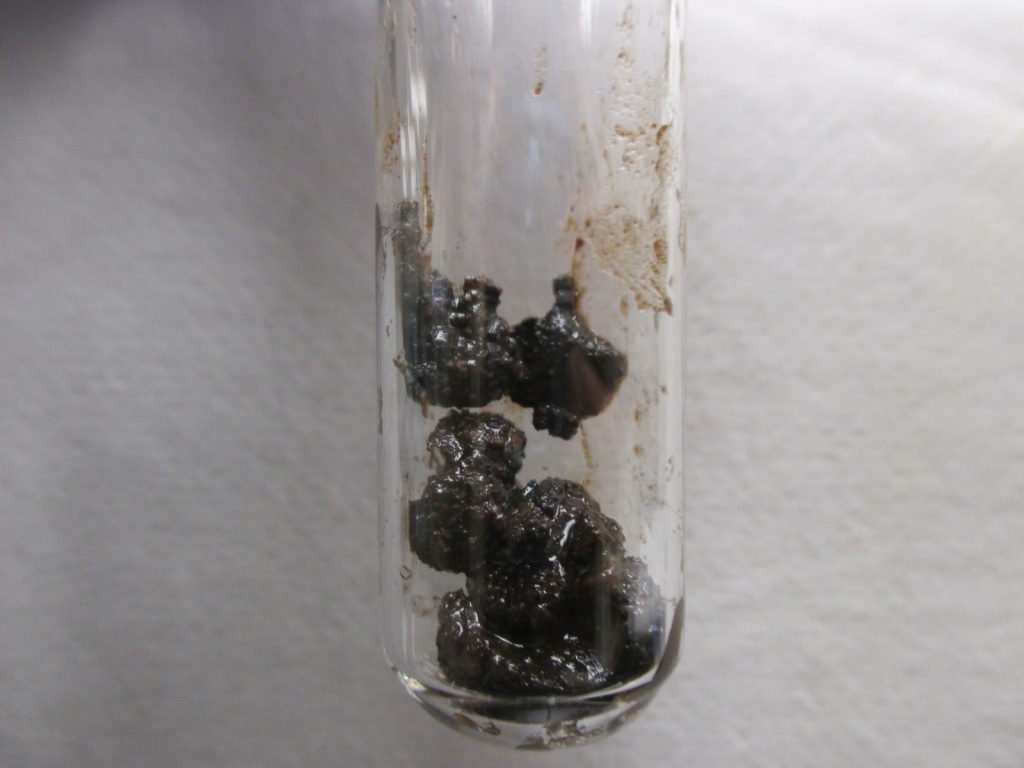
Sludge material caused sticking valves in a cylinder pump. The customer had informed the laboratory they believed the seals were leaking. The sludge material was found to contain isocyanate and dihexylphthalate, which are known process contaminants. In order for these compounds to enter the lubricant system, they had to get past the seal, confirming the customer’s suspicions.
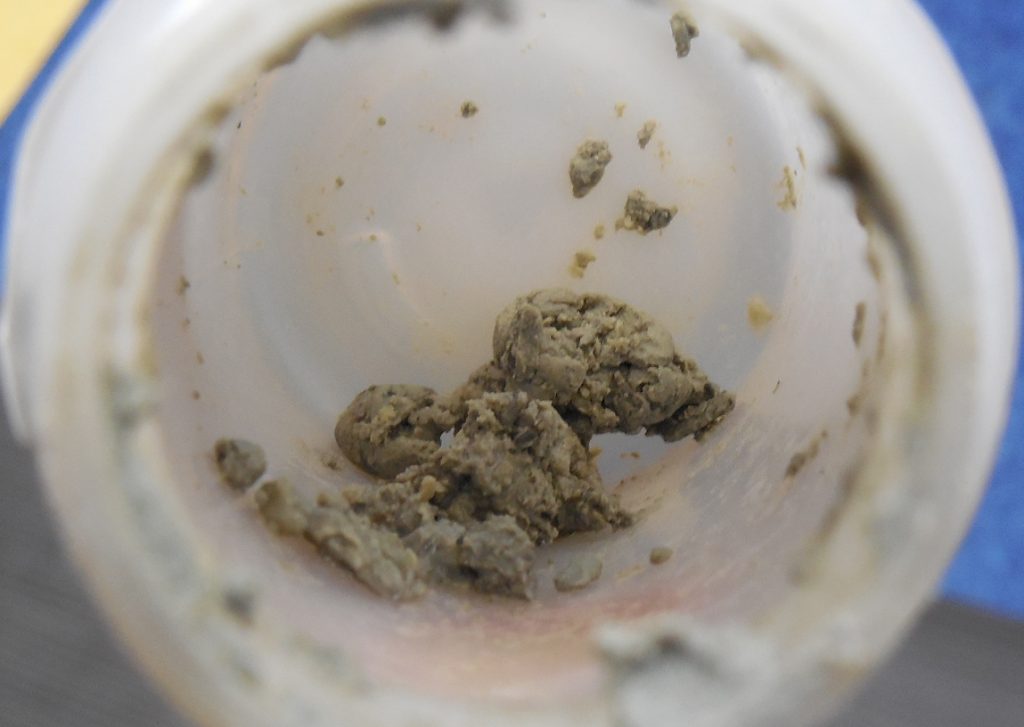
The most important thing to know about sludge is that it can do real damage. TestOil’s Analytical Services Manager Monika Malcolm explains, “The type of damage probably depends on what the sludge is comprised of: hard particles could cause abrasive wear; lubricant degradation products could coat machine parts and cause reduced clearances; there could be reduced ability to dissipate heat; restricted oil flow/improper lubrication, etc. Water could cause rust/corrosion, improper lubrication, and accelerated lubricant degradation.”
Over time, some sludge could bake into an enamel-like coating; in other instances, it will just remain gummy. The good news is that sludge is avoidable. “It is not inevitable,” Monika explains. “It can be prevented or reduced by controlling contamination, monitoring fluid degradation, conditioning the fluid and changing the oil before it reaches the end of its useful life.”
For more information on working with TestOil for oil analysis and training visit www.testoil.com. Contact: 216-251-2510; sales@testoil.com.
About TestOil
With more than 30 years of experience in the oil analysis industry, TestOil focuses exclusively on assisting industrial facilities with reducing maintenance costs and avoiding unexpected downtime through oil analysis program implementation. As industry experts in diagnosing oil-related issues in equipment such as turbines, hydraulics, gearboxes, pumps, compressors and diesel generators, TestOil provides customers with a guarantee of same-day turnaround on all routine testing. With in-house, certified training professionals, TestOil offers lubrication and oil analysis training, private onsite training, certification training and exams, and educational webinars. For more information on partnering with TestOil on oil analysis programs or training opportunities visit www.testoil.com.


